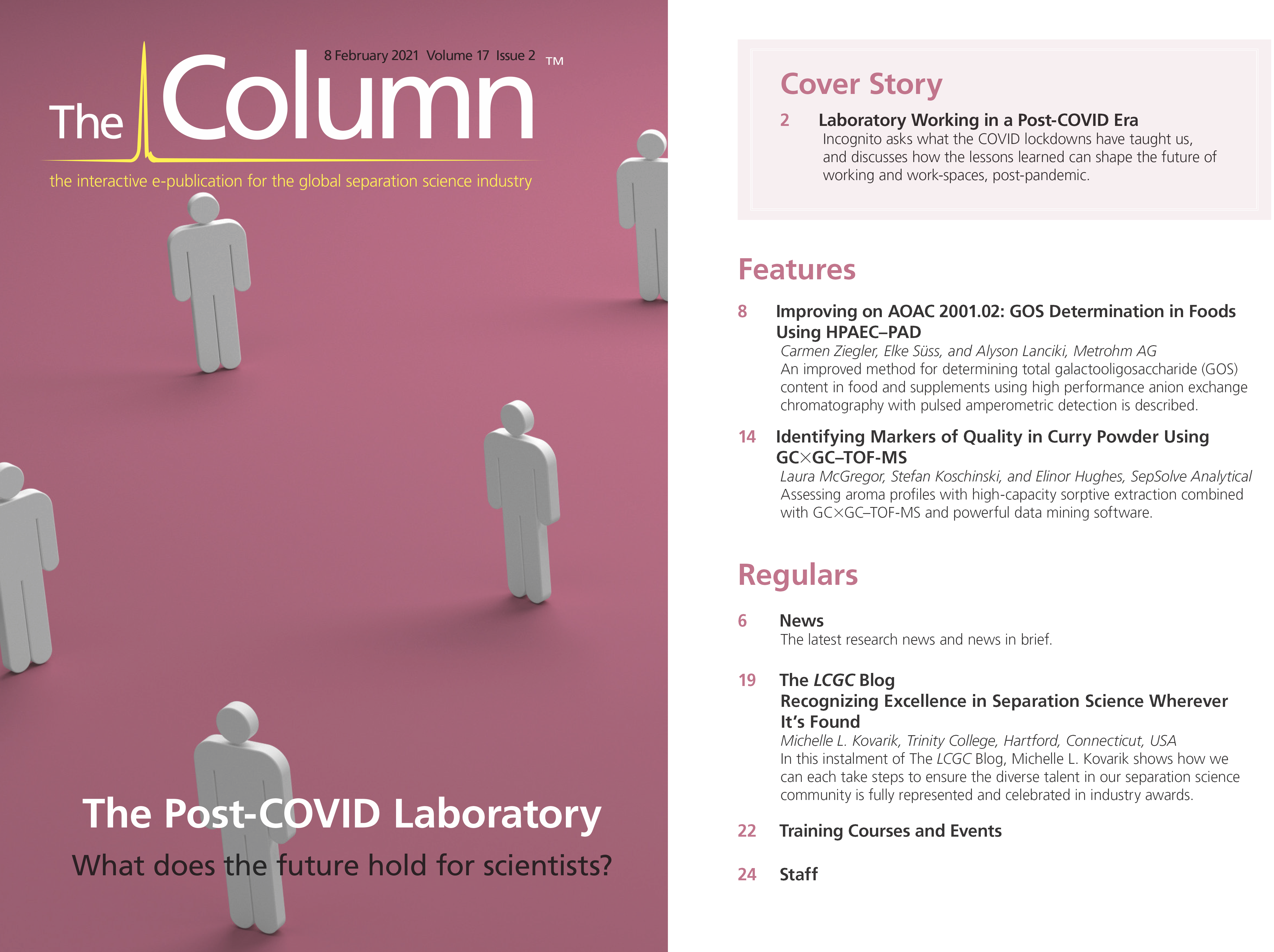Assessing COVID-19-Induced Stress with LC–MS
Ultra-high performance liquid chromatography-tandem mass spectrometry (UHPLC–MS/MS) was used by researchers from Murray State University, Kentucky, USA to analyze isoprostanes in wastewater to assess oxidative stress changes of human populations during the COVID-19 pandemic (1).
Globally, the COVID-19 pandemic has had a devastating impact on communities, with bereavement, isolation, loss of income, and fear triggering innumerable mental health conditions and exacerbating existing ones (2). This psychological stress results in elevated levels of reactive oxygen species (ROS), which in turn catalyzes the oxidation of arachidonic acid and releases isoprostanes, such as the F2-isoprostanes. The ROS-catalyzed oxidization of cellular constituents can eventually result in oxidative damage to DNA and the wide array of complications from such damage.
The impact of COVID-19, in terms of oxidative stress on communities, can be measured using raw wastewater as a pooled urine sample for communities, as excreted isoprostanes are typically flushed down the drain and reach the respective centralized wastewater treatment plants. Importantly, four isoprostanes (8-iso-PGF2a, 2,3-dinor-iPF2a-III, PGE2, and 5-iPF2a-VI) have previously shown to be resistant to degradation under typical sewer conditions and would therefore be ideal subjects for analysis.
As such, researchers developed and validated a UHPLC–MS/MS method capable of determining the presence of the four isoprostanes in wastewater. The target isoprostanes were monitored in one community in western Kentucky (USA) and one community in western Tennessee (USA) for ten consecutive days in typical weeks every month, starting from March 27th to July 1st, 2020. This sampling period covers the first four months of the COVID-19 outbreak in the US, including events such as the closure of schools, public gatherings, and non-life-sustaining business in March, the civil unrest, and the conditional reopening of select businesses and public gatherings in May.
The results consistently detected PGE2 and 5-iPF2a-VI in wastewater suggesting that PGE2 and 5-iPF2a-VI can be a reliable biomarker of community oxidative anxiety. The study attributed higher than expected four-month averages of isoprostanes to the stress and anxiety induced by COVID-19. PGE2 and 5-iPF2a-VI mass loads were significantly increased from the first month of the study to the second, however, they significantly decreased in the third. Researchers believed that wastewater-based-epidemiological determination of isoprostanes can be a near-real-time and cost-effective approach to determining trends in community depression.
References
1) I. Bowers and B. Subedi, Chemosphere 271, 129489 (2021).
2) WHO World Health Organization, 2020. COVID-19 Disrupting Mental Health Services in Most Countries. WHO survey. https://www.who.int/news/item/05-10-2020-covid-19-disrupting-mental-health-services-in-most-countries-whosurvey.

Determining Enhanced Sensitivity to Odors due to Anxiety-Associated Chemosignals with GC
May 8th 2025Based on their hypothesis that smelling anxiety chemosignals can, like visual anxiety induction, lead to an increase in odor sensitivity, a joint study between the University of Erlangen-Nuremberg (Erlangen, Germany) and the Fraunhofer Institute for Process Engineering and Packaging (Freising, Germany) combined behavioral experiments, odor profile analysis by a trained panel, and instrumental analysis of odorants (gas chromatography-olfactometry) and volatiles (gas chromatography-mass spectrometry).
Investigating 3D-Printable Stationary Phases in Liquid Chromatography
May 7th 20253D printing technology has potential in chromatography, but a major challenge is developing materials with both high porosity and robust mechanical properties. Recently, scientists compared the separation performances of eight different 3D printable stationary phases.
Detecting Hyper-Fast Chromatographic Peaks Using Ion Mobility Spectrometry
May 6th 2025Ion mobility spectrometers can detect trace compounds quickly, though they can face various issues with detecting certain peaks. University of Hannover scientists created a new system for resolving hyper-fast gas chromatography (GC) peaks.

.png&w=3840&q=75)

.png&w=3840&q=75)



.png&w=3840&q=75)



.png&w=3840&q=75)









